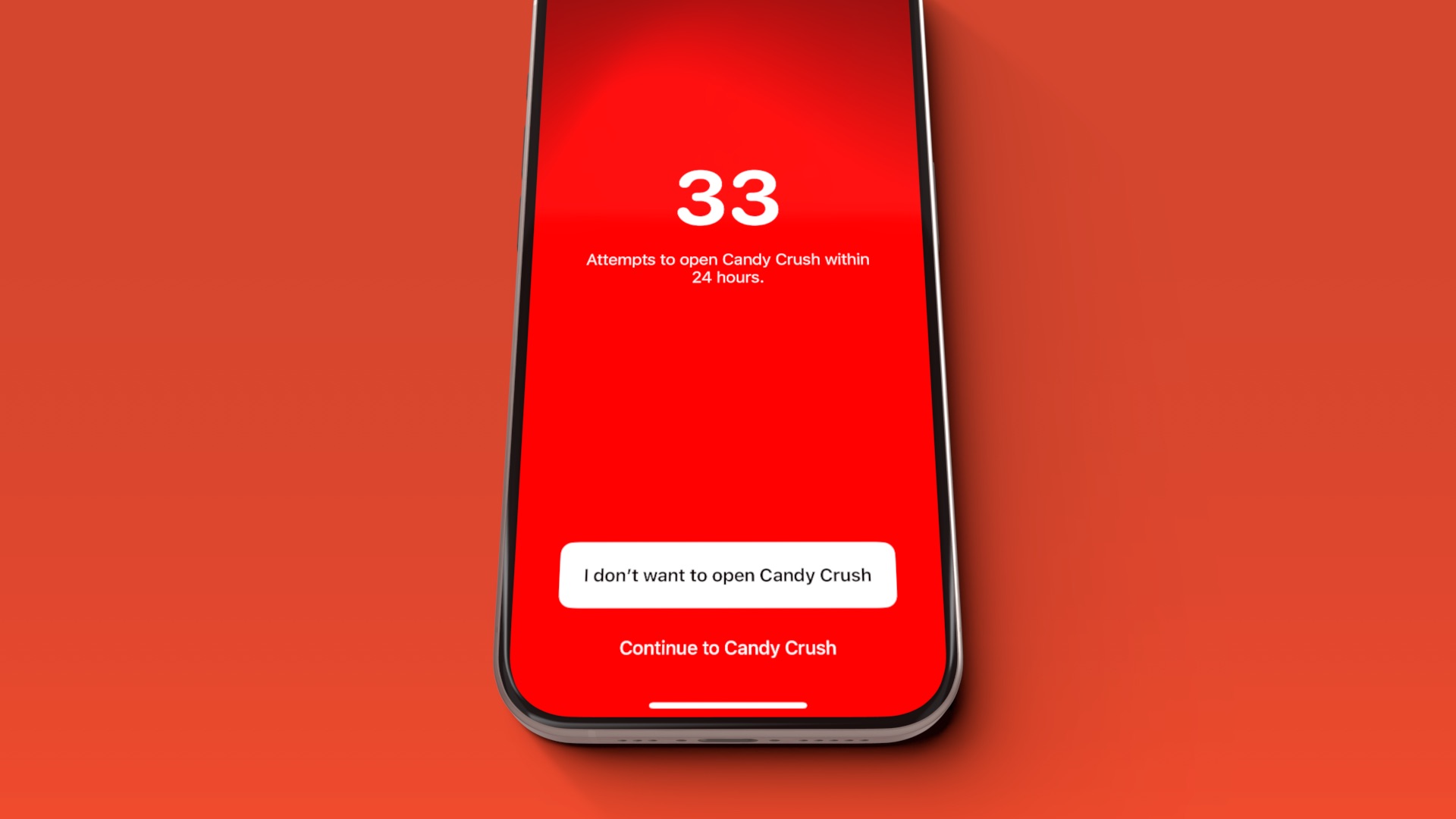
How to Quit Candy Crush (3 simple steps with screenshots)
Looking for a way to stop playing Candy Crush because you can’t resist opening it again and again?
No worries, we’ve got you covered: With these three simple steps you’ll be able to navigate around the psychological traps that mobile game companies have engineered into their games.
With our scientifically-backed method you’ll be able to use Candy Crush a lot less, and long-term maybe realize that you don’t need it altogether.
Step-by-step guide
Here’s how you block Candy Crush with one sec in three simple steps:
- Download the “one sec” app for free! It’s an app that delays access to certain apps that you’d like to spend less time on.
It’s like a speed bump: You are prompted to take a deep breath before you can continue to your target-apps. - Follow the tutorial to set up one sec with Candy Crush. Setup works differently on iPhone and on Android phones, but the result will be the same: a breathing exercise before you can open the app.
- Now that you have the intervention up & running, stick to your goals! Continue using one sec! We know it’s frustrating. But that’s why it works! These painful moments of having to wait for Candy Crush to open will help you to reflect if you really want to use that app right now.
On top of that, one sec makes Candy Crush a less feasible option for your subconsciousness to gain some quick dopamine hit. You’ll notice that over time you’ll lose interest to use the app.
Our scientific research shows exactly that: one sec lowers app usage by 57% on average.

Candy Crush Works Like a Drug
Candy Crush, like many mobile games, uses a variety of psychological tricks to keep players engaged and, in some cases, addicted. Understanding these key techniques will make you more resistant when you encounter them.
1. Variable Reward Schedule (Operant Conditioning)
How it works: Candy Crush utilizes a variable reward schedule, which is one of the most powerful mechanisms for reinforcing behavior. Players don’t know exactly when they’ll get a reward (like a rare candy combination or a level up), which keeps them playing “just one more time.” This unpredictability creates a sense of anticipation and excitement, making the game more engaging.
2. Progressive Difficulty and Achievements
How it works: The game starts easy, which gives players a sense of accomplishment and mastery. As players advance, levels become progressively more difficult, but not impossibly so. The difficulty curve is carefully calibrated to keep players in a state of flow, where the game is challenging enough to be engaging but not so hard that it becomes frustrating. The frequent sense of progress, through the completion of levels, unlockable items, and achievements, keeps players motivated to continue.
3. Social Proof and Competition
How it works: Candy Crush integrates social features that allow players to see how their friends are performing. This creates a form of social proof, where players feel validated by their progress relative to others. Additionally, the competitive element (e.g., leaderboard rankings, sending lives to friends) taps into the natural human desire to compete and outperform others.
4. Limited Lives and Waiting Time
How it works: Players are given a limited number of lives, and once they run out, they have to wait a certain amount of time before they can play again (unless they pay or receive lives from friends). This mechanic plays into the scarcity principle, making the opportunity to play seem more valuable. The waiting period also increases the anticipation, which can make the urge to play stronger when the lives are replenished.
5. Freemium Model and Microtransactions
How it works: Candy Crush is free to play, which lowers the barrier to entry and attracts a large player base. However, the game monetizes through microtransactions, where players can purchase extra lives, boosters, or to skip difficult levels. The game subtly nudges players toward these purchases by creating moments of frustration (e.g., being stuck on a difficult level) and offering a quick, easy solution in exchange for a small payment. This model exploits the sunk cost fallacy, where players who have already invested time (and possibly money) in the game feel compelled to continue spending to not lose their progress.
Now that you know some of the principles, I hope this helps you to reflect on them the next time you encounter one of those – so they might not be as effective on you anymore.

one sec is free with one app
If you’re looking for an easy & free way to get rid of your Candy Crush addiction, give one sec a try!
Download it now for free.